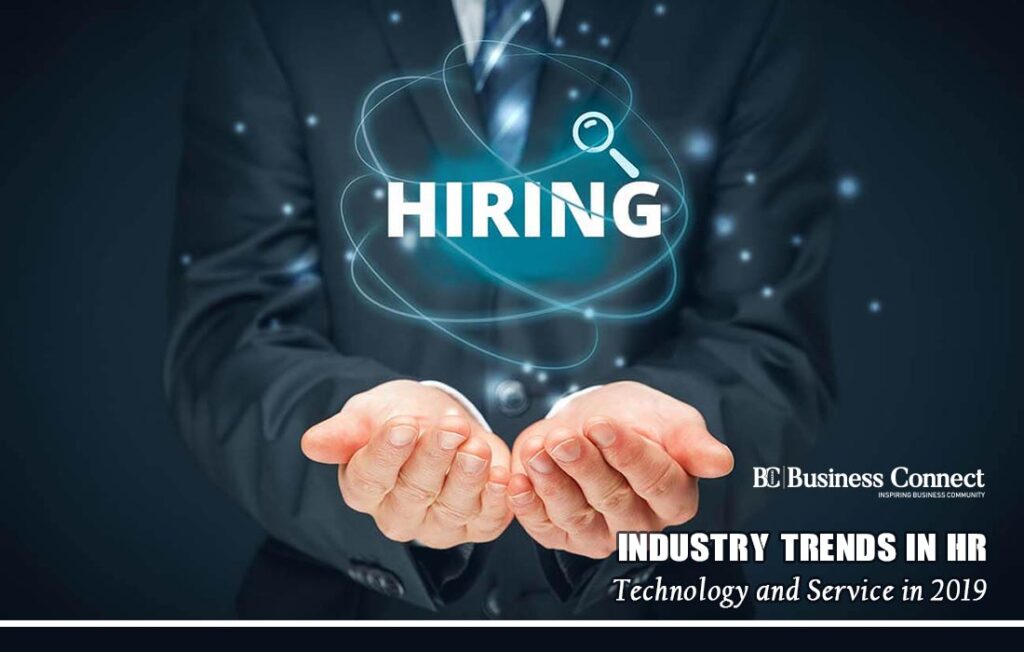Industry Trends in HR Technology and Service in 2019
HR organization faces the competitive challenges of becoming a top destination for talent, building the workforce of the future, managing an agile organization and retaining top employees, all while providing strategic insight to key decision-makers. For becoming, a true strategic partner to any business and enable enterprise-wide workforce transformation leaders must act quickly to modernize the HR organization in their companies.
Thinking about the changing industrial experience, rapid growth in many sectors and revolutionary change, one must probably think for Human Resources (HR). Nevertheless, social change, technology, and shifting laws are changing this field of HR in many powerful ways. These current changes in HR tend to influence the average employee’s life and these developments ripple through the whole workforce.
In this article, we take you to look at the latest changes and technology use in HR services. We will discuss the devices as well as practices that are revolutionizing the way HR is being run in today’s era. This article also highlights the effects of these trends on your business in general and on your HR department in particular. Look at what is on the horizon for HR.
AI in recruitment in Business
“One trend I have noticed lately is the increasing use of automation and AI”. As advances in these areas of HR continue, the big companies are finding new ways to utilize the technology to improve HR tasks like recruiting.
AI can be used to analyze the web and scroll through thousands of candidates in seconds to produce automatic short-lists. This change can save HR employees lots of time digging through stacks of applicants and create more room for other tasks.
Employee feedback for Betterment
Previously, the employers have relied on periodic performance and reviews such as surveys, and other outdated methods to know about employee preferences. However, these methods have many flaws. The performance reviews are hardly a good opportunity for employees to speak up or raise concerns since they are often tied to bonuses. Besides, surveys are time-consuming and rote, barring employees from offering honest feedback.
Today, the cutting edge is continuous employee feedback; in the next decade, human resources departments will rely upon technologically enabled data collection to understand worker sentiments, motivations and pain points. When this feedback occurs regularly and voluntarily throughout the year, employers can expect a much better understanding of their employees.
Employee performance managed by managers
Any organization will benefit from the performance management of their managers’ control and it always lies in the hands of managers. The opposed HR stepping into the workflow is better to manage the employee performance. The role of providing feedback will belong to the manager, and because of this, even poor performance can be addressed quickly and turned out to be better and beat faster. HR services in any business need to be a department of productivity for enablers and this change will allow the function to concentrate on becoming that.
Higher access to analytics for employees
Members of the C-Suite (the group of officers of a business) will have greater access to people’s insights and analytics in the company. All the organizations will look forward to implementing robust HR solutions and platforms that are user-friendly. These services can provide strong people in analytics trends that will assist in decision-making for the company. The business officers will naturally make better decisions as to the help of key people analytics and hiring statistics to rise.
Rise of the ‘remote’ workforce in Company
A rising segment of employees in every field of the market today prefers to work out of remote locations instead of the offices. This theme of the working level has entirely been possible through recent development in technology. About half of the workforce in the United States is expected to be freelancing, in some capacity of the working environment, by 2020. The HR departments will be able to use this trend to their advantage and mold the working environment. Instead of hiring full-time employees nowadays, companies explore teams of talented freelancers and independent contractors. Hereby, building trust on a project-to-project basis is simpler these days.
Rise of microlearning in the HR department
Most of the adults start losing attention to work within as little as ten minutes and is likely to go down further. To meaningfully engage them in time and train them as learners with such good attention is the objective of HR services. HR departments need to be designed as a proper training panel for special sessions that are impact-based. More frequent and shorter sessions of the training will be more beneficial at workplaces nowadays.



